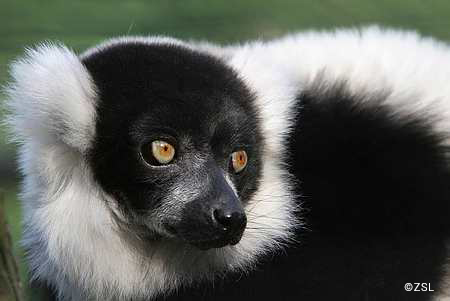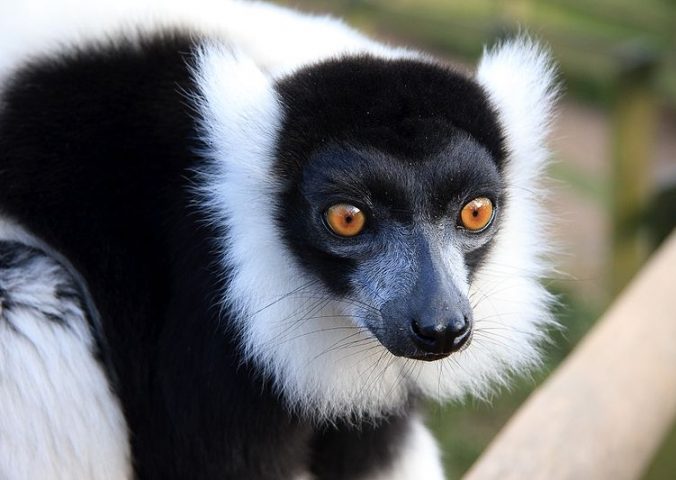About
The black-and-white ruffed lemur is one of two ruffed lemur species in the Varecia genus.
Lemurs evolved independently on the island of Madagascar for 50-60 million years. Both lemur species in the genus Varecia are the joint-largest living members of the family Lemuridae. As such they have been excessively hunted, whilst much of their habitat has been deforested. They are also impacted by practices such as selective logging.
The range of the black and white ruffed lemur extends in a line down the eastern Malagasy coast from a southern limit around the Mananara River near Vangaindrano to a northern limit somewhat north and west of Maroantsetra, on the Bay of Antongil. However, the remaining populations is patchily distributed and has undergone a decline of over 80% in the last 27 years. Whilst some individuals are known to occur in protected areas, further designation and enforcement is required to protect this species. The main threats this species face are habitat loss due to slash-and-burn agriculture, logging and mining, as well as being one of the most heavily hunted lemur species.
- Order: Primates
- Family: Lemuridae
- Population: Unknown
- Trend: decreasing
- Size: 43-57cm
- Weight: 2.6-4.1kg
EDGE Score
Distribution
The three subspecies represent distinct populations spread along Madagascar’s east coast.
Habitat and Ecology
This species is very patchily disturbed in lowland to mid-altitude rainforests recorded from sea level up to 1,300m. They maintain large home ranges consisting of primary forest with tall trees. Their diet is dominated by fruit (74-90%), supplemented with nectar, flowers and small amounts of leaves.

